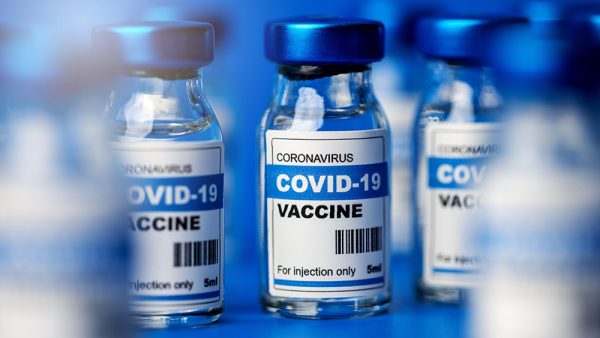 Parler
Parler Gab
Gab
- Dimethyl sulfoxide (DMSO) is a highly versatile solvent known for its ability to dissolve various substances, making it useful in both chemical and biological applications. One of its most remarkable features is its ability to easily cross biological membranes, allowing it to act as a carrier that can deliver other substances directly into cells and tissues.
- In addition to its solvent power, DMSO offers several pharmacological benefits. It has been shown to relieve pain, reduce inflammation and even modulate immune responses, making it a potential treatment for musculoskeletal injuries, infections and certain immune-related conditions.
- While DMSO is generally considered safe at low concentrations, higher doses can cause toxic effects and may interact dangerously with alcohol, highlighting the need for careful use and monitoring.
- Beyond its medical uses, DMSO also plays an important role in agriculture, where it helps improve the effectiveness of fertilizers and pesticides, and in veterinary medicine, where it is used to treat a variety of inflammatory conditions.
- As research continues, DMSO remains a promising and widely studied compound with the potential to impact many areas of medicine, science and industry.
Medicine's shape-shifter
One of DMSO's most remarkable traits is its ability to pass through skin and cell membranes effortlessly. This allows it to carry other substances, like medications, deep into tissues that would otherwise be harder to reach. Studies have shown that DMSO can enhance the absorption of drugs, like morphine sulfate and certain antibiotics, potentially reducing the needed dosage while improving effectiveness. In the right settings, this carrier effect could revolutionize how treatments are delivered. But DMSO doesn't just act as a taxi for other drugs. It also boasts analgesic (pain-relieving) and anti-inflammatory properties of its own. It works by stabilizing lysosomes – tiny cellular structures involved in inflammation – slowing down fibroblast activity, which helps prevent excessive scar tissue formation. In situations involving radiation exposure or freezing temperatures, DMSO shines yet again. It scavenges harmful free radicals and stabilizes cell membranes, offering radioprotective and cryoprotective benefits. That's why it's a staple in laboratories freezing cells for long-term storage, preventing ice crystal formation that would otherwise destroy delicate tissues.A double-edged sword in microbiology and immunology
DMSO's relationship with bacteria and the immune system is complicated. At certain concentrations, DMSO can inhibit bacteria, fungi and even viruses, acting as a mild antimicrobial agent. Intriguingly, it also increases the sensitivity of drug-resistant bacteria to antibiotics, hinting at future therapeutic strategies. (Related: DMSO: A game-changer in the treatment of infectious diseases.) On the immune side, DMSO can boost immune responses when administered alongside vaccines, stimulating white blood cell activity and possibly improving vaccine effectiveness. But high concentrations can also interfere with diagnostic antigen-antibody reactions, a crucial caveat for medical testing.Veterinary medicine: DMSO in action
Veterinarians have embraced DMSO for decades, especially in the treatment of horses. Applied topically, DMSO has proven highly effective for inflammatory conditions, like bursitis and synovitis, with reported success rates as high as 90 percent. It also accelerates wound healing, reducing swelling and shortening recovery times, making it a go-to remedy for performance animals. In cats, researchers have even used intraperitoneal (internal abdominal) applications of DMSO to successfully treat feline panleukopenia, a severe and often fatal viral disease.DMSO's agricultural footprint
DMSO doesn't just affect animals – it has profound effects on plants as well. DMSO serves as a carrier for growth regulators and herbicides, enhancing their effectiveness. Agricultural scientists also use DMSO to study how plants absorb water and nutrients, gaining insights that could one day boost crop yields or improve plant resilience in harsh environments.DMSO and the human connective tissue
Inside the human body, DMSO has complex interactions with connective tissues, like collagen. In lab studies, high concentrations of DMSO altered collagen's structure, sometimes making it stronger or more resilient. In conditions like scleroderma, a disease characterized by thickening and hardening of the skin, DMSO treatments reduced collagen buildup and visibly improved skin condition, offering hope to patients for whom few therapies exist.DMSO in dermatology
DMSO's easy skin penetration makes it a unique tool in dermatology. Doctors have used it to treat conditions, like herpes simplex, scleroderma and even "creeping eruption," a rare parasitic skin infection. it can also enhance the effectiveness of topical steroids and antifungals, delivering these medications deeper than creams alone. However, DMSO isn't without drawbacks. Skin dryness, irritation and redness and an unmistakable garlic-like body odor are common side effects. Long-term use can cause more severe dryness and scaling.Why DMSO still matters
Despite its many successes, DMSO's medical adoption stalled in the 1970s, largely due to regulatory hurdles, public confusion and concerns about side effects. The U.S. Food and Drug Administration (FDA), cautious and wary of the media storm, restricted DMSO's use for human medicine, approving it only for specific conditions, like bladder inflammation. Animal doctors, especially veterinarians treating racehorses, embraced it wholeheartedly – but for humans, DMSO largely disappeared from pharmacies and faded into scientific obscurity. DMSO, in the form of Rimso-50, is still FDA-approved – but only for treating a rare bladder condition called interstitial cystitis. Everywhere else, it's quietly used "off-label" by some alternative practitioners, researchers and a few persistent doctors who believe in its overlooked, untapped power. Today, scientists continue to explore DMSO's future potential, whether as a natural adjuvant for vaccines, a radioprotective and cryoprotective agent or a vehicle for innovative drug therapies. Watch this video to learn more about DMSO. This video is from the Daily Videos channel on Brighteon.com.More related stories:
The miraculous healing power of DMSO: Nature's forgotten cure for cancer, pain and regeneration. DMSO: A common lab chemical with ANTICANCER potential. Science reveals how cow urine and DMSO could transform breast cancer treatment.Sources include:
Dokumen.pub PMC.NCBI.NLM.NIH.gov Brighteon.comFarro: An ancient supergrain making a modern comeback
By Laura Harris // Share
Study shows oral health could be key to preventing heart disease
By Cassie B. // Share
Common sense is now a conspiracy
By News Editors // Share
Governments continue to obscure COVID-19 vaccine data amid rising concerns over excess deaths
By patricklewis // Share
Tech giant Microsoft backs EXTINCTION with its support of carbon capture programs
By ramontomeydw // Share
Germany to resume arms exports to Israel despite repeated ceasefire violations
By isabelle // Share










